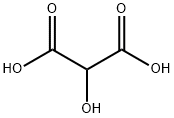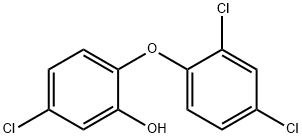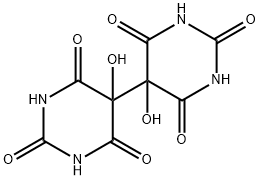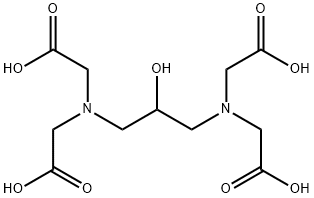1,3-Diamino-2-propanol
Synonym(s):1,3-Diamino-2-hydroxypropane;2-Hydroxy-1,3-propanediamine
- CAS NO.:616-29-5
- Empirical Formula: C3H10N2O
- Molecular Weight: 90.12
- MDL number: MFCD00008142
- EINECS: 210-474-2
- SAFETY DATA SHEET (SDS)
- Update Date: 2024-12-18 14:15:30

What is 1,3-Diamino-2-propanol ?
Description
1,3-Diamino-2-propanol (DAP), also known as 2-hydroxy-1,3-diaminopropane, is a white to yellowish low melting solid. Keep in a cool, well-ventilated place. Avoid prolonged storage periods. Store under inert gas, in a tightly sealed container and at ambient temperatures. 1,3-Diamino-2-propanol is incompatible with acids and strong oxidizing agents and should not be stored or handled in their vicinity.
Chemical properties
white to yellowish low melting solid
The Uses of 1,3-Diamino-2-propanol
- 1,3-Diamino-2-propanol is a versatile bidentate diamine ligand which is used in the synthesis of a variety of organometallic compounds.
- It is a precursor to synthesize the fluorogenic dsDNA binder, N1,N3-bis(4-amidinophenyl)propane-1,3-diamine (BAPPA).
- It can also be used as a branching unit in the synthesis of peptide dendrimers.
What are the applications of Application
1,3-Diamino-2-propanol is a useful biochemical for proteomics research
Preparation
1,3-Diamino-2-propanol is synthesized by reacting Epichlorohydrin with ammonia in alkaline
environment by adding sodium hydroxide. Afterwards, the product
undergoes a series of purification steps.
What are the applications of Application
1,3-diamino-2-propanol (DAPL), a close analog of 1,3-diaminopropane, is an indirect inhibitor of ornithine decarboxylase (ODC). It is administered orally and inhibits ODC activity in the livers of partially hepatectomized rats[1]. It contains amine and hydroxyl groups. Therefore, it can be crosslinked with the carboxyl group via covalent and hydrogen bonds and has been investigated as a diamine monomer in the aqueous phase to fabricate the high-performance RO membrane[2].
Hazard
1,3-Diamino-2-propanoli is a hazardous chemical.
H302 (66.17%): Harmful if swallowed [Warning Acute toxicity, oral]. H314 (66.92%): Causes severe skin burns and eye damage [Danger Skin corrosion/irritation]. H315 (33.08%): Causes skin irritation [Warning Skin corrosion/irritation]. H317 (66.17%): May cause an allergic skin reaction [Warning Sensitization, Skin]. H318 (66.17%): Causes serious eye damage [Danger Serious eye damage/eye irritation]. H319 (33.08%): Causes serious eye irritation [Warning Serious eye damage/eye irritation]. H335 (34.59%): May cause respiratory irritation [Warning Specific target organ toxicity, single exposure; Respiratory tract irritation.
Purification Methods
Dissolve it in an equal amount of water, shake it with charcoal and distil it at 68o/0.1mm. The distillate solidifies. It is too viscous to be distilled through a packed column. [Beilstein 4 IV 1694.]
References
[1] Raunio H, et al. The inhibition of induction of microsomal monooxygenase activity by 1,3-diamino-2-propanol, an inhibitor of ornithine decarboxylase. Biochemical and Biophysical Research Communications, 1979; 9: 285–290.
[2] Su T, et al. A novel polyamide thin-film nanocomposite reverse osmosis membrane constructed by a 3D multi-layer graphene oxide assembled with 1,3-diamino-2-propanol. Journal of Membrane Science, 2023; 681: 121773.
Properties of 1,3-Diamino-2-propanol
| Melting point: | 40-44 °C(lit.) |
| Boiling point: | 235°C |
| Density | 1.0352 (rough estimate) |
| refractive index | 1.4610 (estimate) |
| Flash point: | >230 °F |
| storage temp. | 2-8°C |
| solubility | water: soluble1g/10 mL |
| form | Low Melting Solid |
| pka | 9.69, 7.93(at 20℃) |
| color | White to yellow |
| Water Solubility | Very soluble in water. |
| BRN | 741859 |
| InChI | InChI=1S/C3H10N2O/c4-1-3(6)2-5/h3,6H,1-2,4-5H2 |
| CAS DataBase Reference | 616-29-5(CAS DataBase Reference) |
| EPA Substance Registry System | 2-Propanol, 1,3-diamino- (616-29-5) |
Safety information for 1,3-Diamino-2-propanol
| Signal word | Warning |
| Pictogram(s) |
 Exclamation Mark Irritant GHS07 |
| GHS Hazard Statements |
H315:Skin corrosion/irritation H319:Serious eye damage/eye irritation H335:Specific target organ toxicity, single exposure;Respiratory tract irritation |
| Precautionary Statement Codes |
P261:Avoid breathing dust/fume/gas/mist/vapours/spray. P264:Wash hands thoroughly after handling. P264:Wash skin thouroughly after handling. P271:Use only outdoors or in a well-ventilated area. P280:Wear protective gloves/protective clothing/eye protection/face protection. P302+P352:IF ON SKIN: wash with plenty of soap and water. P305+P351+P338:IF IN EYES: Rinse cautiously with water for several minutes. Remove contact lenses, if present and easy to do. Continuerinsing. |
Computed Descriptors for 1,3-Diamino-2-propanol
| InChIKey | UYBWIEGTWASWSR-UHFFFAOYSA-N |
| SMILES | C(N)C(O)CN |
New Products
4-Fluorophenylacetic acid 4-Methylphenylacetic acid N-Boc-D-alaninol N-BOC-D/L-ALANINOL Tert-butyl bis(2-chloroethyl)carbamate 3-Morpholino-1-(4-nitrophenyl)-5,6-dihydropyridin- 2(1H)-one Furan-2,5-Dicarboxylic Acid Tropic acid S-2-CHLORO PROPIONIC ACID ETHYL ISOCYANOACETATE 2-Bromo-1,3-Bis(Dimethylamino)Trimethinium Hexafluorophosphate (6-METHYL-[1,3]DITHIOLO[4,5-b]QUINOXALIN-2-ONE INDAZOLE-3-CARBOXYLIC ACID 4-IODO BENZOIC ACID (2-Hydroxyphenyl)acetonitrile 4-Bromopyrazole 5,6-Dimethoxyindanone 2-(Cyanocyclohexyl)acetic acid 4-methoxy-3,5-dinitropyridine 2-aminopropyl benzoate hydrochloride 1-(4-(aminomethyl)benzyl)urea hydrochloride diethyl 2-(2-((tertbutoxycarbonyl)amino) ethyl)malonate tert-butyl 4- (ureidomethyl)benzylcarbamate Ethyl-2-chloro((4-methoxyphenyl)hydrazono)acetateRelated products of tetrahydrofuran








You may like
-
 1,3-Diamino-2-propanol CAS 616-29-5View Details
1,3-Diamino-2-propanol CAS 616-29-5View Details
616-29-5 -
 1,3-Diamino-2-propanol CAS 616-29-5View Details
1,3-Diamino-2-propanol CAS 616-29-5View Details
616-29-5 -
 1,3-Diamino-2-propanol CAS 616-29-5View Details
1,3-Diamino-2-propanol CAS 616-29-5View Details
616-29-5 -
 1975-50-4 98%View Details
1975-50-4 98%View Details
1975-50-4 -
 2-HYDROXY BENZYL ALCOHOL 98%View Details
2-HYDROXY BENZYL ALCOHOL 98%View Details
90-01-7 -
 2-Chloro-1,3-Bis(Dimethylamino)Trimethinium Hexafluorophosphate 221615-75-4 98%View Details
2-Chloro-1,3-Bis(Dimethylamino)Trimethinium Hexafluorophosphate 221615-75-4 98%View Details
221615-75-4 -
 14714-50-2 (2-Hydroxyphenyl)acetonitrile 98+View Details
14714-50-2 (2-Hydroxyphenyl)acetonitrile 98+View Details
14714-50-2 -
 118753-70-1 98+View Details
118753-70-1 98+View Details
118753-70-1